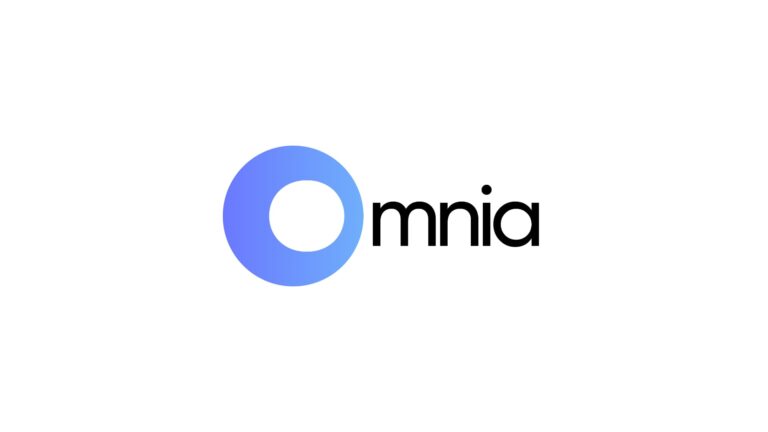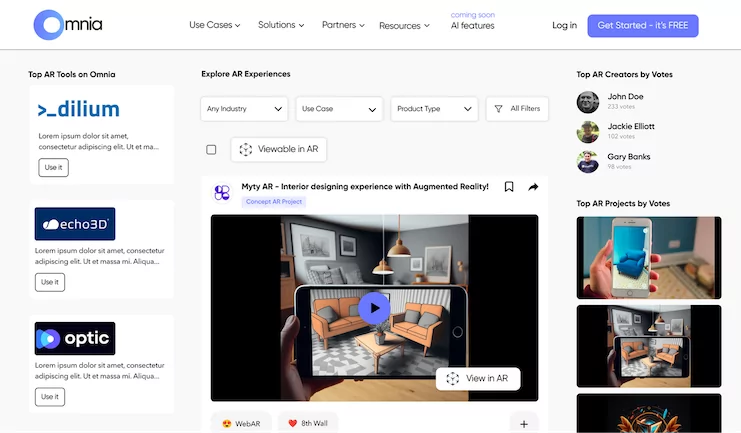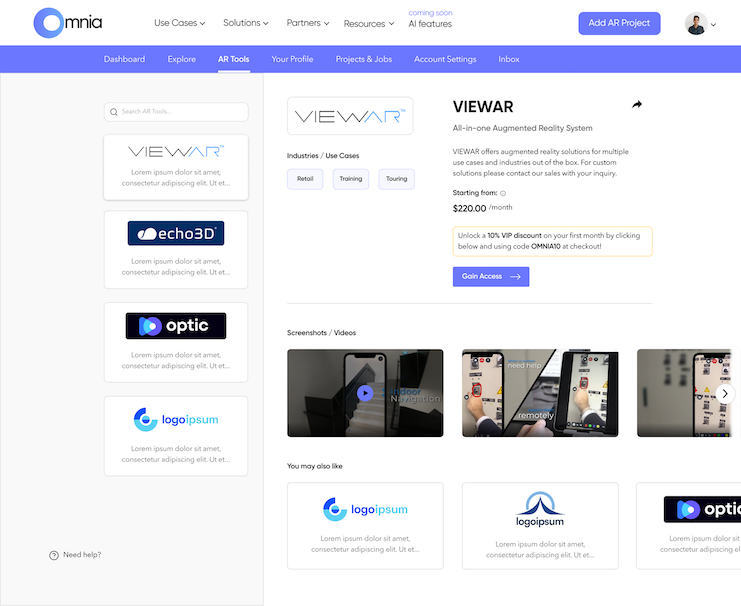
AR advocates often talk about the “iPhone moment.” This is the anticipation for the market event – which isn’t evident until long after it happens – when AR goes from an early-adopter and ill-defined technology to something that everyone wants.
That moment will be transformative when it occurs, but equally important is the YouTube moment. This is like the iPhone moment but for creators. It unlocks and democratizes widescale creation by democratizing formerly out-of-reach technology.
This is the moment that Omnia is looking to spark. Launching this week, Omnia offers a platform for creators to develop and manage their work; and for brands to discover that work. The latter addresses AR’s surging subsector for immersive brand marketing.
Backing up to contextualize this opportunity, one of AR’s most resonant (and revenue-driving) subsectors is marketing. It helps consumers gain confidence in purchases by visualizing products in 3D; and correspondingly helps brands demonstrate products in their full 3D glory.
Omnia accelerates this opportunity as a marketplace to connect the supply (creators) and demand (brands) sides of the equation. This is important because historical evidence points to marketplaces as critical components of emerging tech – everything from Yelp to Etsy to LinkedIn.
“Omnia democratizes and removes barriers for the AR creator economy to monetize their work,” says Omnia founder & CEO Aldo Petruzzelli, “while simplifying and de-fragmenting the intimidating process that brands go through when taking their first steps into immersive marketing.”

Augmenting the Creator Economy
Going deeper into the two-sided marketplace that Omnia serves, let’s tackle each side one at a time. Starting with creators, a massive opportunity exists at the convergence point between two major tech trends: the creator economy and AR.
But as those forces collide, there’s a missing piece: an easy onramp to AR creation. Beyond creation, there’s no single source for managing and distributing AR assets. Such functions exist to varying degrees in single AR creator tools, but there’s nothing that cuts across them.
Starting with the creation aspect, Omnia offers a one-stop-shop for embedded functionality of several top AR creation tools, from 8th Wall to Lens Studio (see the full list). Beyond convenience, this makes Omnia agnostic so it can serve a broad range of creator goals.
For example, when launching into a given AR project, creators have goals for form and function. And those goals map to varying AR creation tools. Having a single place to tap into the capabilities of each tool empowers them with functionality and optionality.
To sweeten the deal, Omnia offers free hosting for creators, which is a valuable perk given that polygon-heavy payloads are the building blocks of AR. And yet another cherry on top is AI integrations to streamline project management and automate workflows (more on that in a bit).
Beyond creation is managing and distributing AR assets. Here Omnia helps AR creators achieve discoverability, and to manage their portfolios like a business. This stems from Omnia’s mission to help AR creators also become AR strategists.

The Fog of AR
Moving on to the demand side of the equation – consumer brands – they’re equally in need of streamlined and democratized AR. As noted, AR is becoming a valued piece of the brand marketing mix… but it has only scratched the surface with early adopter brands.
To wrap some numbers around that claim, our research arm ARtillery Intelligence reports that AR marketing only accounts for half a percent of global marketing spend. This may sound like a bad thing but what it tells us is that there’s ample headroom.
But what’s it going to take to bring AR marketing from the Pumas and Pradas of the world to the massive long tail of neighborhood and regional businesses? It’s all about removing friction. Though AR is opportune, it’s intimidating for all those CMOs who haven’t jumped into the pool yet.
That’s where Omnia comes in. For example, just like it makes AR creators’ work discoverable, it helps brands discover AR content. Similarly, the agnostic cross-platform position noted earlier can give brands a wider range of options, and thus higher probability, to meet varied goals.
Beyond matching goals with the right AR creator platforms, the AR market is fragmented by several devices. So a federated entity that sits in the middle of that rapidly-changing ecosystem can help brands de-fragment and cut through the fog of AR.

Ideation & Inspiration
Back to a point teased earlier, AI can further bring all of the above together. Backing up, AI and AR go together in lots of ways, as we’ve examined. There are several ways they’re converging but one of the most exciting is by streamlining workflows for AR creators.
Think of this like the generative AI artwork you’ve seen from engines like Midjourney. Bringing that concept to 3D, text prompts can help AR creators generate assets. That can include helping them expedite and automate 3D asset creation, or to stimulate ideation and inspiration.
Omnia is on board with this principle and taking it a few steps further. Specifically, it employs its own proprietary generative AI engine. Using it, creators can rapidly and automatically generate placeholder assets that otherwise slow them down (see video below).
This generative AI piece adds to the creator benefits outlined above with an intelligent creative assistant. This could be the most valuable component of all as generative AI advances. After all, next to the need to find the next client, one of creators’ biggest scarcities is time.
Altogether, Omnia positions itself at the creator-economy convergence point of AR, AI, creators, and brands. This is a powerful combination, where the whole is greater than the sum of its parts. We’ll watch to see if it can mine the opportunity that sits at that four-way intersection.

